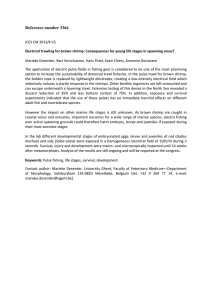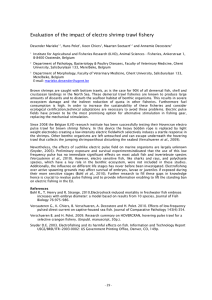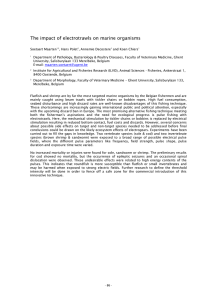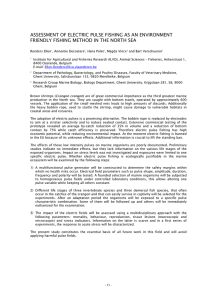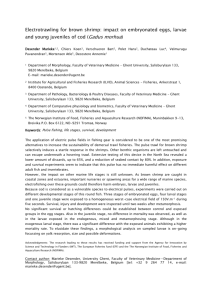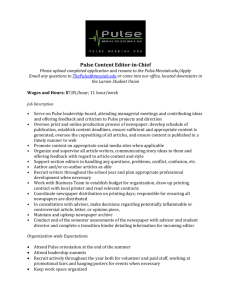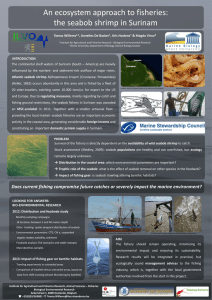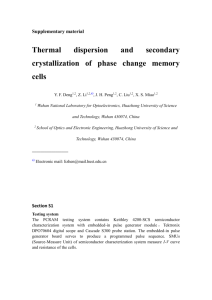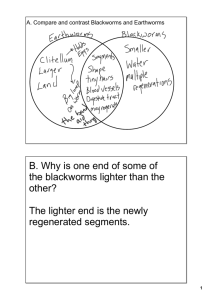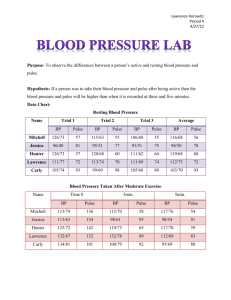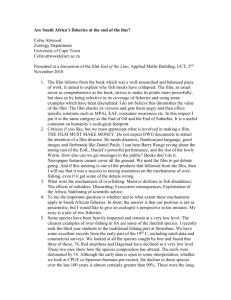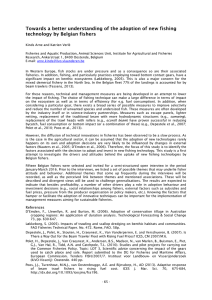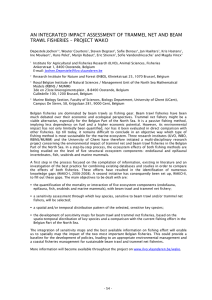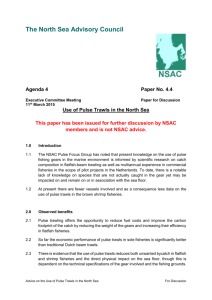ICES CM 2012/ C Evaluation of the impact of pulse fishery on a
advertisement
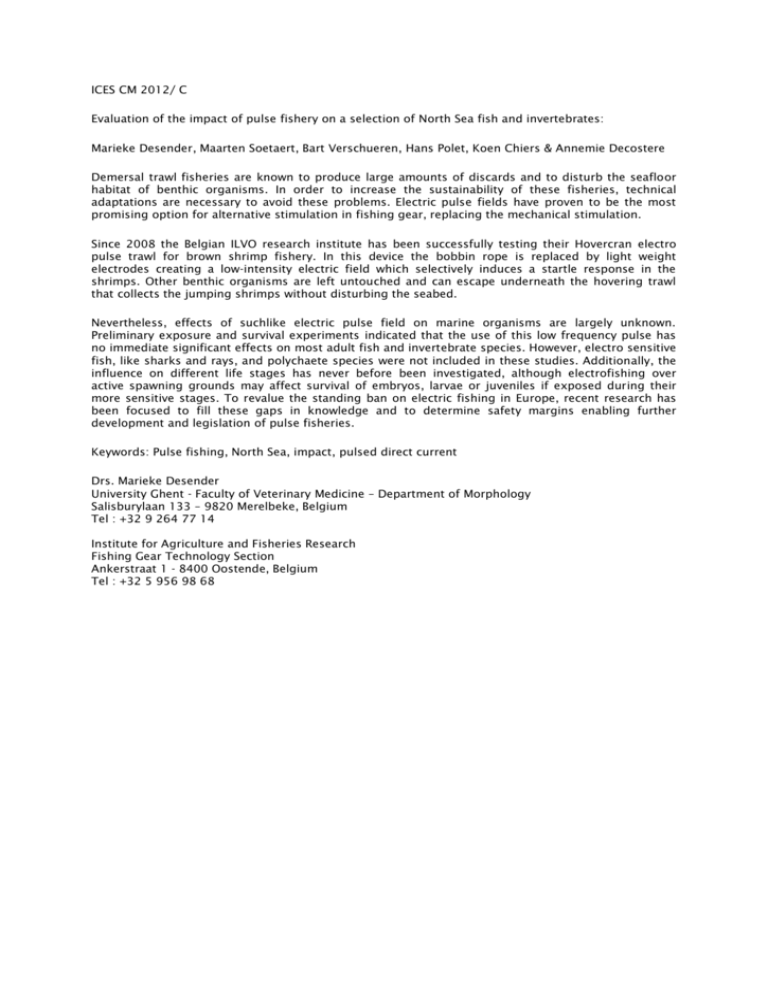
ICES CM 2012/ C Evaluation of the impact of pulse fishery on a selection of North Sea fish and invertebrates: Marieke Desender, Maarten Soetaert, Bart Verschueren, Hans Polet, Koen Chiers & Annemie Decostere Demersal trawl fisheries are known to produce large amounts of discards and to disturb the seafloor habitat of benthic organisms. In order to increase the sustainability of these fisheries, technical adaptations are necessary to avoid these problems. Electric pulse fields have proven to be the most promising option for alternative stimulation in fishing gear, replacing the mechanical stimulation. Since 2008 the Belgian ILVO research institute has been successfully testing their Hovercran electro pulse trawl for brown shrimp fishery. In this device the bobbin rope is replaced by light weight electrodes creating a low-intensity electric field which selectively induces a startle response in the shrimps. Other benthic organisms are left untouched and can escape underneath the hovering trawl that collects the jumping shrimps without disturbing the seabed. Nevertheless, effects of suchlike electric pulse field on marine organisms are largely unknown. Preliminary exposure and survival experiments indicated that the use of this low frequency pulse has no immediate significant effects on most adult fish and invertebrate species. However, electro sensitive fish, like sharks and rays, and polychaete species were not included in these studies. Additionally, the influence on different life stages has never before been investigated, although electrofishing over active spawning grounds may affect survival of embryos, larvae or juveniles if exposed during their more sensitive stages. To revalue the standing ban on electric fishing in Europe, recent research has been focused to fill these gaps in knowledge and to determine safety margins enabling further development and legislation of pulse fisheries. Keywords: Pulse fishing, North Sea, impact, pulsed direct current Drs. Marieke Desender University Ghent - Faculty of Veterinary Medicine – Department of Morphology Salisburylaan 133 – 9820 Merelbeke, Belgium Tel : +32 9 264 77 14 Institute for Agriculture and Fisheries Research Fishing Gear Technology Section Ankerstraat 1 - 8400 Oostende, Belgium Tel : +32 5 956 98 68
